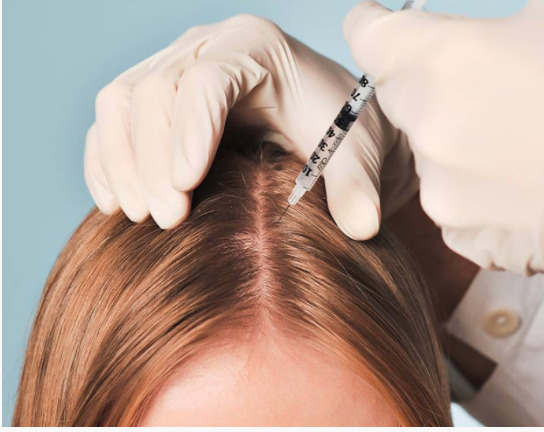Hair loss is a common concern for many people, particularly men, and it can significantly impact self-esteem and confidence. In Dubai, where personal appearance is often emphasized, finding effective hair loss treatments is crucial. One of the most talked-about options is finasteride, a medication commonly used to treat male pattern baldness. But does it offer a permanent solution? Let’s explore what you need to know about Finasteride for Hair Loss Dubai and its role in hair loss treatment.
Understanding Finasteride
Finasteride is an oral medication that works by inhibiting the conversion of testosterone into dihydrotestosterone (DHT), a hormone that contributes to hair loss. By reducing DHT levels, finasteride aims to slow down hair loss and potentially stimulate regrowth in individuals experiencing androgenetic alopecia, commonly known as male pattern baldness.
How Does Finasteride Work?
The primary mechanism of finasteride involves blocking the action of the enzyme 5-alpha-reductase, which converts testosterone into DHT. Elevated DHT levels can shrink hair follicles, leading to thinner hair and eventual hair loss. By reducing DHT levels, finasteride can help prevent further hair loss and promote hair regrowth in some individuals.
Efficacy of Finasteride in Hair Loss Treatment
Results Over Time
Numerous studies have shown that finasteride can be effective in slowing hair loss and promoting regrowth in men. Most users begin to see noticeable results after three to six months of consistent use, with the best outcomes typically observed after one year. Users may experience thicker hair, improved coverage, and less hair shedding.
Success Rates
Research indicates that about 80-90% of men taking finasteride experience a halt in hair loss, while approximately 60-70% may see some degree of hair regrowth. However, individual results can vary based on factors like the extent of hair loss, the duration of treatment, and genetic predispositions.
Limitations of Finasteride
While finasteride can be effective, it is essential to understand that it does not work for everyone. Some individuals may not respond to the medication or may experience minimal results. Additionally, finasteride primarily addresses hair loss on the crown and mid-scalp area and is less effective for receding hairlines.
Is Finasteride a Permanent Solution?
Temporary Nature of Effects
Finasteride is not a permanent solution for hair loss. Although it can significantly reduce hair loss and promote regrowth while being used, discontinuing the medication often leads to a reversal of its benefits. Most users will experience hair loss returning to its previous state within 12 months after stopping finasteride.
Long-Term Commitment
For those considering finasteride as a treatment option, it’s essential to view it as a long-term commitment. Continued use is necessary to maintain any positive results achieved during treatment. Users must be prepared for the possibility of lifelong usage to keep hair loss at bay.
Potential Side Effects of Finasteride
Like any medication, finasteride comes with potential side effects, although not everyone experiences them. Common side effects include:
- Sexual Dysfunction: Some users report decreased libido, erectile dysfunction, or ejaculation disorders. These symptoms may persist even after discontinuing the medication, although this is rare.
- Mood Changes: There have been reports of mood swings, depression, and anxiety in some users.
- Gynecomastia: Rarely, some men may experience breast tenderness or enlargement.
It’s crucial to discuss these potential side effects with a healthcare professional before starting treatment to weigh the benefits against the risks.
Alternatives to Finasteride
For those who may be hesitant to use finasteride due to potential side effects or ineffective results, several alternatives exist.
Minoxidil
Minoxidil is a topical treatment that can be applied directly to the scalp. It works by stimulating hair follicles and increasing blood flow to the area. Unlike finasteride, minoxidil does not affect hormone levels and can be used in conjunction with it.
Hair Transplantation
For individuals seeking more immediate or permanent results, hair transplant procedures such as follicular unit extraction (FUE) or follicular unit transplantation (FUT) can be viable options. These procedures involve relocating hair follicles from areas of the scalp with dense hair to areas experiencing thinning or baldness.
Low-Level Laser Therapy (LLLT)
LLLT is a non-invasive treatment that uses specific wavelengths of light to stimulate hair follicles. This option can be used alone or in combination with other treatments for enhanced effectiveness.
Conclusion
Finasteride can be a highly effective treatment for hair loss, offering significant benefits for many users in Dubai. However, it is crucial to recognize that it does not provide a permanent solution. Continued use is necessary to maintain results, and individuals must be aware of potential side effects. Before starting any treatment, consulting a healthcare professional or a dermatologist specializing in hair loss is essential. They can provide personalized recommendations based on individual needs and conditions. While finasteride may work for some, exploring a combination of treatments might yield the best results in the pursuit of restoring a full, healthy head of hair. In the vibrant city of Dubai, where aesthetics play a vital role in personal identity, understanding the realities of hair loss treatments like finasteride can empower individuals to make informed choices about their appearance and well-being.





Comments